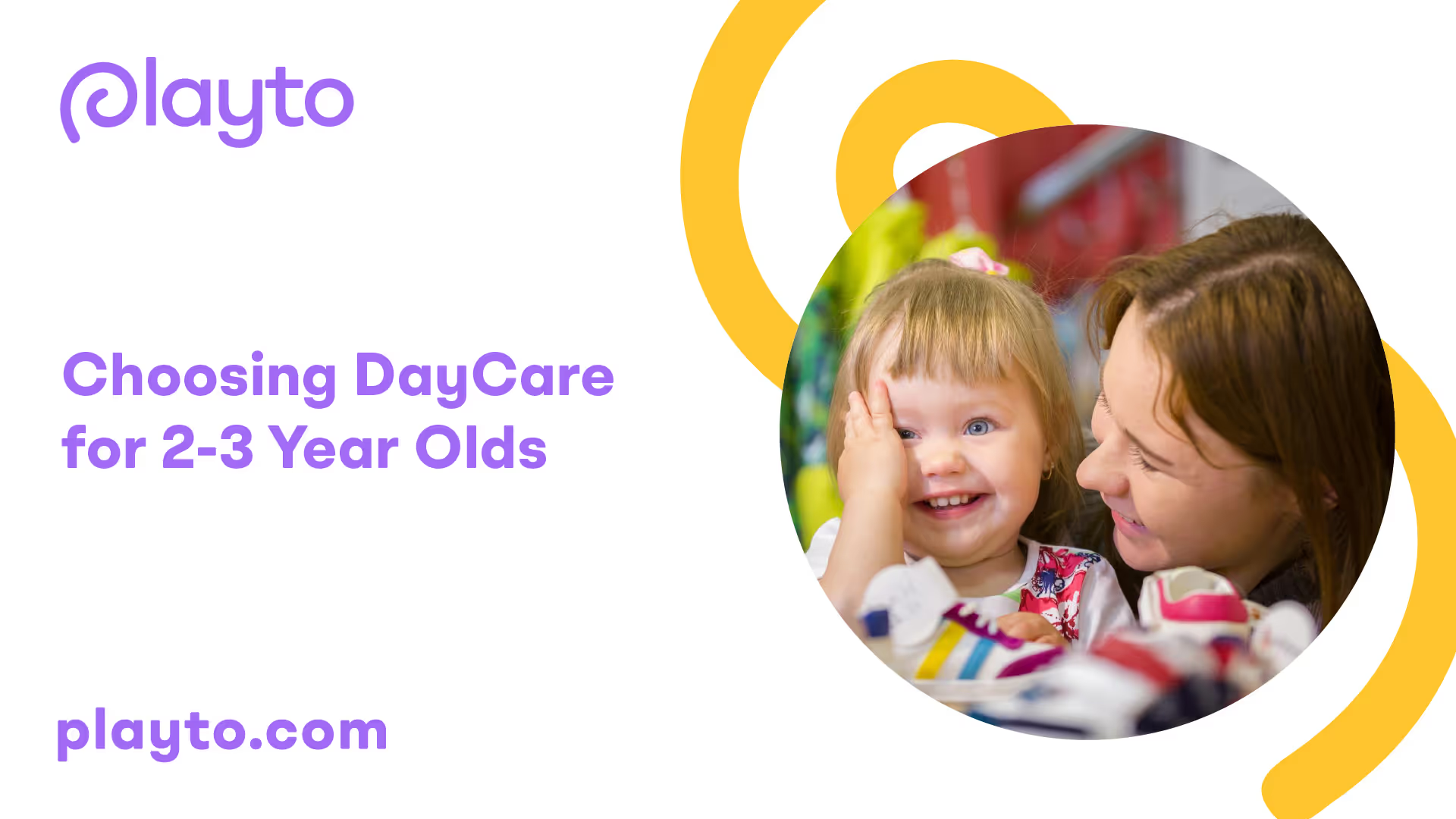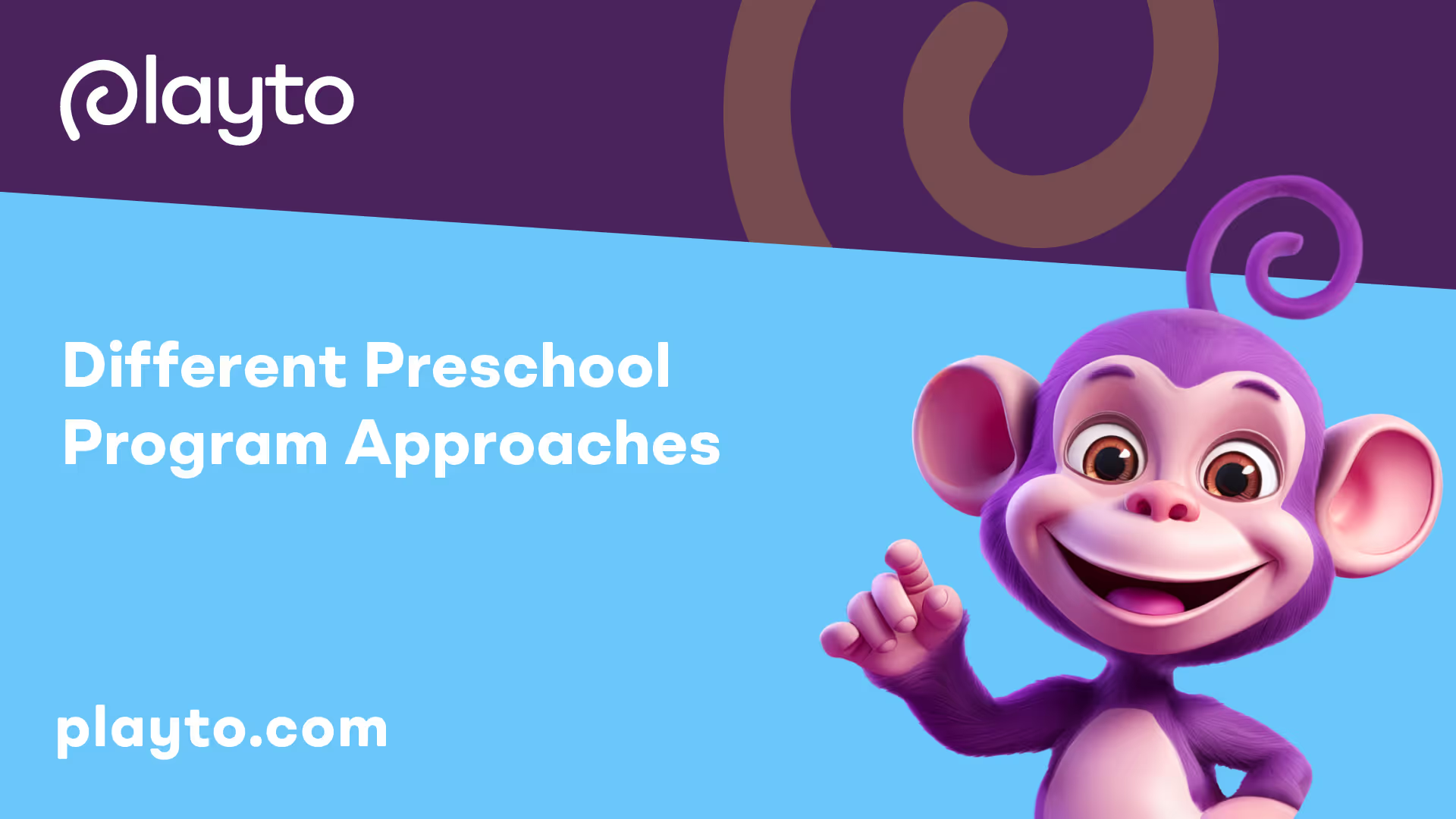
Understanding Daycare Programs
When considering daycare options for 2-3 year olds, parents in New York will find two primary types of programs: play-based learning and structured academic programs. Each type offers unique benefits and caters to different learning preferences.
Play-Based Learning Programs
Play-based learning programs emphasize discovery and hands-on activities as the primary means for children to learn. In these settings, children engage in play that promotes creativity and imagination, while also developing critical social skills. Research indicates that such programs help nurture curiosity and foster cognitive growth. These environments allow children to explore their interests at their own pace and build foundational skills necessary for later academic success.
Key Features Benefits
- Child-Led Exploration: Encourages independence and initiative, allowing children to take charge of their learning and discover their interests.
- Social Interaction: Enhances communication and teamwork skills by providing opportunities for children to collaborate and interact with peers.
- Hands-On Learning: Promotes critical thinking and problem-solving by engaging children in practical activities and real-world applications.
- Creativity and Imagination: Fosters innovation and self-expression, enabling children to explore and develop their creative abilities.
For more insights on how daycare can nurture curiosity, check out our article on how daycare nurtures curiosity.
Structured Academic Programs
In contrast, structured academic programs focus on preparing children for the learning environments they will encounter in formal schooling. These programs typically feature a more rigorous curriculum, with an emphasis on foundational literacy and numeracy skills. Instructors plan specific lessons and activities designed to promote academic readiness and cognitive development.
Key Features Benefits
- Planned Curriculum: Ensures that essential academic concepts are covered systematically and comprehensively.
- Goal-Oriented Learning: Helps students set and achieve specific learning objectives, fostering a sense of accomplishment and accountability.
- Regular Assessments: Tracks developmental progress and learning outcomes, allowing for timely adjustments to teaching strategies.
- Teacher-Led Instruction: Provides direct guidance and support, ensuring that students receive the necessary help to understand and apply concepts effectively.
Parents may find that such structured settings aid in the development of crucial social skills, laying a strong foundation for future academic endeavors. For more information, consider our article detailing the benefits of daycare for 2-3 year olds.
Understanding the differences between these daycare programs helps parents make informed decisions when choosing daycare for their children. Each type contributes uniquely to a child's growth and learning readiness, aligning with individual needs and preferences.
Different Preschool Program Approaches

When choosing daycare for 2-3 year olds, understanding the various preschool program approaches can help caregivers select the best fit for their child's needs and learning style. Below are four notable educational philosophies: Montessori, Waldorf, Reggio Emilia, and HighScope.
Montessori Programs
Montessori programs emphasize hands-on learning and creativity. They utilize specially designed Montessori materials that align with children's interests and developmental stages. The main goal of these programs is to nurture a child's senses, character, practical life skills, and academic abilities. Many Montessori programs offer continuity beyond preschool, extending into adolescence. This approach encourages independence and self-direction, allowing children to explore at their own pace while developing critical thinking skills [1].
Feature Description
- Learning Environment: Focuses on accessibility with materials and activities tailored to the needs and interests of the child.
- Key Focus: Emphasizes sensory development and practical life skills to support holistic growth.
- Age Range: Adapts to various developmental stages, typically from infants to adolescence, accommodating the evolving needs of children.
- Teacher Role: Acts as a guide rather than a director, facilitating learning by providing support and resources while allowing children to lead their own exploration and discovery.
Waldorf Programs
Waldorf programs, inspired by the teachings of Rudolf Steiner, aim to nourish a child's spirit, soul, and body through rhythmic, hands-on learning. They promote creative expression and often feature art, music, and movement as integral parts of the curriculum. This approach is beneficial for children who thrive under established routines, as each day is structured with predictable activities. Teachers in Waldorf programs typically require certification in Waldorf education to ensure they adhere to the program's philosophy [1].
Feature Description
- Learning Environment: Creative and nurturing, with a strong emphasis on the arts and imaginative play.
- Key Focus: Centers on rhythmic repetition and building a sense of community through structured routines and collaborative activities.
- Age Range: Typically designed for children aged 2-7 years, aligning with early developmental stages and cognitive growth.
- Teacher Role: Certified professionals implement Waldorf principles, guiding children through artistic and experiential learning methods while fostering a holistic educational experience.
Reggio Emilia Programs
Reggio Emilia programs prioritize exploration and self-expression, allowing children to lead their own learning. This approach relies on children's natural curiosity and views the environment as an essential participant in the learning process, often referred to as the "third teacher." Collaborate activities are encouraged, fostering strong relationships among peers and educators. Projects are often initiated based on children's interests, promoting engagement and deeper learning [1].
Feature Description
HighScope Curriculum
The HighScope curriculum emphasizes active participatory learning, encouraging children to take ownership of their education. Through a "plan-do-review" process, children learn to plan their activities, engage in hands-on projects, and review their outcomes. This methodology develops essential problem-solving and conflict-resolution skills. Subjects such as math, reading, and science are integrated into playful, meaningful activities, making learning enjoyable and effective [1].
Feature Description
- Learning Environment: Engaging and activity-rich, with a strong focus on play-based learning to stimulate curiosity and exploration.
- Key Focus: Emphasizes active participation and critical thinking skills, encouraging children to engage in hands-on activities that foster cognitive and social development.
- Age Range: Specifically designed for early childhood, targeting developmental stages from 2 to 5 years old.
- Teacher Role: Acts as partners in learning, guiding children through their activities and facilitating a supportive environment that promotes independent exploration and discovery.
By understanding these different preschool program approaches, parents can make more informed decisions when [choosing daycare for 2-3 year olds]. Each program comes with its unique set of benefits and philosophies that cater to various learning styles and developmental needs. To learn more about the advantages of daycare, check out our article on the benefits of daycare for 2-3 year olds.
Factors to Consider in Choosing Daycare

When selecting a daycare for 2-3 year olds, several key factors should guide the decision-making process. This section elaborates on developmental milestones, daycare schedules, and licensing standards, all of which play a vital role in ensuring a nurturing environment for toddlers.
Developmental Milestones
Developmental milestones are crucial when evaluating daycare options for toddlers. Children aged 2-3 years require significant outdoor and gross motor time for their physical growth. The American Academy of Pediatrics recommends that toddlers engage in at least 60 minutes of active play each day, with a minimum of 30 minutes led by adults. This interaction helps foster essential skills in a safe environment.
Developmental Area Recommended Time
- Active Play: 60 minutes per day to support physical development, coordination, and overall health.
- Adult-Led Play: 30 minutes per day, providing structured activities that help in skill development and learning goals.
A daycare that prioritizes developmental milestones will integrate ample opportunities for movement and physical activities throughout the day, promoting overall growth and fitness.
Daycare Schedules
Daycare schedules for toddlers aged 18 months to three years should be structured to enhance language and gross motor skills. A well-designed schedule encourages interaction during activities, which helps cultivate cooperative play. Programs should also provide opportunities for younger children to observe older toddlers, facilitating learning through imitation [2].
A sample daily routine may include:
Time Activity
- 8:00 AM: Drop-off and Breakfast
- 9:00 AM: Independent Play
- 9:30 AM: Circle Time
- 10:00 AM: Outdoor Play
- 10:30 AM: Sensory or Art Activities
- 11:30 AM: Nap Time
- 1:00 PM: Snacks
- 1:30 PM: Group Play
- 2:30 PM: Closing Circle
- 3:00 PM: Choice Time/Outside Play
Such a schedule balances play and structured learning, catering to the diverse needs of young children.
Licensing Standards
Licensing standards hold significant importance when selecting a daycare for 2-3 year olds. Nationally accredited centers must meet rigorous standards concerning teacher qualifications, curriculum, and safety. If a center lacks accreditation, it is essential to verify that it is at least licensed by the state [3].
Moreover, caregiver-to-child ratios are a fundamental aspect of daycare safety. Lower ratios are preferable, as they create a safer and more conducive learning environment for children. It is advisable to consult local guidelines or inquire whether potential centers comply with recommended ratios from organizations such as NAEYC [3].
By considering developmental milestones, appropriate schedules, and licensing standards, parents can make informed decisions when choosing daycare for 2-3 year olds.
Importance of Developmental Activities
Developmental activities play a crucial role in the early education of 2-3 year-olds. These activities support the comprehensive development of toddlers, ensuring they thrive in various areas including physical, cognitive, and language skills.
Outdoor and Gross Motor Skills
When selecting a daycare, it is essential to ensure that it provides ample opportunities for outdoor and gross motor activities. Toddlers need significant physical activity for proper growth and development. According to guidelines, preschoolers should receive up to two hours of physical activity each day. This includes various activities such as running, climbing, and playing games, which enhance their coordination, balance, and strength.
Activity Type Recommended Duration
- Outdoor Play (60 minutes)
- Free Play Areas (30 minutes): Time for children to explore and play freely in open spaces.
- Structured Games (30 minutes): Organized activities and games led by an adult to promote skills and teamwork.
Programs that integrate outdoor play into their daily routines can facilitate significant progress in gross motor skills. Choosing a daycare that emphasizes outdoor time can lead to a healthier, more active lifestyle for toddlers.
Language and Gross Motor Skills
Daycare schedules for young children should also emphasize language development alongside gross motor skills. Activities such as circle time, where children participate in group songs and storytelling, help to enhance language comprehension and vocabulary.
Incorporating elements like interactive play and conversation during free play can further stimulate language acquisition. A balanced routine should include a mix of structured and unstructured learning opportunities that promote both physical and language skills.
Development Area Recommended Activities
Language Skills:
- Storytelling: Reading or telling stories to develop vocabulary and comprehension.
- Singing: Engaging in songs to improve language rhythm and memory.
- Rhymes: Using nursery rhymes to enhance phonemic awareness and language patterns.
Gross Motor Skills:
- Climbing: Activities like climbing structures to build strength and coordination.
- Running: Encouraging running games to improve agility and cardiovascular health.
- Outdoor Games: Playing structured outdoor games to develop motor planning and social skills.
Programs that nurture both areas can foster critical early literacy foundations while enhancing physical abilities.
Structured Activities for Preschoolers
In addition to unstructured play, structured activities are vital for preschoolers. A well-rounded daily schedule may include focused activities that develop literacy, math skills, and fine motor skills through various hands-on experiences. These could take the form of art projects, sensory play, and table work designed to engage young minds actively.
A sample daily schedule for toddlers might look like this:
Time Activity
- 8:00 AM: Drop-off and Breakfast: Start the day with a nutritious breakfast and settle in.
- 9:00 AM: Independent Play: Allow children to choose their own activities and explore freely.
- 10:00 AM: Circle Time (Songs, Routines): Gather for group songs and establish daily routines.
- 10:30 AM: Outdoor Play (Physical Activity): Engage in outdoor activities to promote physical development and exploration.
- 11:30 AM: Table Work (Literacy/Math Skills): Focus on structured activities that enhance literacy and math skills.
- 12:00 PM: Lunch: Enjoy a balanced meal together, encouraging social interaction and good eating habits.
- 1:00 PM: Nap/Quiet Time: Provide a restful period for naps or quiet activities to recharge.
- 2:00 PM: Structured Activities (Art, Sensory): Participate in guided art projects and sensory play to foster creativity and sensory exploration.
Recognizing the importance of developmental activities can aid parents in choosing daycare for 2-3 year olds. An environment that balances all aspects of growth will lead to a satisfying and enriching experience for their toddlers. For additional insights on the benefits of daycare, refer to our article on benefits of daycare for 2-3 year olds.
Safety Considerations in Daycare Selection
When parents search for a daycare for their 2-3 year olds, safety considerations are paramount. Several factors play a significant role in ensuring a safe and nurturing environment for children.
Licensing and Accreditation
Licensing standards are essential when choosing a daycare for 2-3 year olds. Centers that have national accreditation meet rigorous criteria in teacher qualifications, curriculum, and safety. If a center isn't accredited, it is crucial to ensure they are at least licensed by the state. This licensing ensures that the daycare adheres to specific safety regulations and operational guidelines, making it a vital indicator of quality. For more information on what makes a daycare safe, check Care.com.
Accreditation Status Description
Nationally Accredited:
- Meets High Standards: Adheres to rigorous standards for curriculum, safety, and overall quality.
- Comprehensive Review: Undergoes thorough evaluations by accrediting organizations to ensure high-quality standards are maintained.
State Licensed:
- Complies with State Regulations: Meets basic requirements set by state regulations.
- Varied Standards: May not adhere to the more extensive standards set by national accreditation bodies.
Caregiver-to-Child Ratios
Caregiver-to-child ratios are crucial for daycare safety. Lower ratios create a safer environment for children, allowing for more individualized attention and care. It is recommended to have fewer kids per adult to ensure adequate supervision and support. Parents are encouraged to research guidance for their area or ask potential centers if they comply with ratios recommended by organizations such as the National Association for the Education of Young Children (NAEYC) [3].
Age Group Recommended Ratio
- Infants (0-12 months): 1:3
- Toddlers (1-3 years): 1:4
- Preschoolers (3-5 years): 1:10
Staff Qualifications and Training
Staff at daycare centers should be adequately trained to ensure the safety and well-being of children. Essential qualifications include criminal background checks, CPR and first aid certifications, and specialized training in early childhood education. This training is critical for fostering trust between caregivers and parents. A well-trained staff can effectively respond to emergencies and support children's development. More details on caregiver qualifications can be found at Care.com.
Required Qualifications Description
These safety considerations are vital when choosing daycare for 2-3 year olds. Parents should prioritize these factors to ensure their child is in a safe and nurturing environment.
Ensuring Daycare Safety
When choosing daycare for 2-3 year olds, safety is a top priority for parents. Understanding the policies and procedures in place can help caregivers feel more secure about their choice. Here are some key components of ensuring safety in daycare settings.
Open-Door Policy
An open-door policy is essential at daycare centers. This policy allows parents the freedom to visit or observe their children's classrooms at any time. It fosters transparency and trust between caregivers and parents. Parents are encouraged to inquire about visitation policies during their tour of the facility. Being able to see their children in a safe environment helps parents feel more comfortable about leaving them in care. For more information about the benefits of daycare, visit our article on benefits of daycare for 2-3 year olds.
Emergency and Safety Plans
Effective safety and emergency plans are crucial in preparing daycare centers for unexpected situations. These plans should encompass a variety of emergency scenarios, including fire drills, tornado drills, lockdowns, and earthquake drills. Regular practice of these drills ensures that both staff and children know how to respond in emergencies, helping to minimize panic and confusion. Parents should ask how often drills are conducted and what specific procedures are in place during their assessment of potential facilities. For additional insights on how daycare nurtures curiosity, check our article on how daycare nurtures curiosity.
Regular Safety Drills
Regular safety drills reinforce the importance of preparedness in daycare environments. These drills give children the opportunity to practice their responses, making them more comfortable with emergency procedures. The frequency of these drills can vary, but they should be conducted at least once a month to ensure children remain familiar with safety practices. Staff members should also be trained in effective emergency response tactics to guide children safely during actual scenarios. Parents should verify that staff are adequately trained, which includes criminal background checks, CPR and first aid certifications, and training in early childhood education [3]. For guidance on helping children adjust to daycare, see our article on first day tips for 2-3 year olds.
By ensuring that daycare centers have robust safety protocols, parents can make more informed decisions regarding their childcare options, knowing their children will be cared for in a secure environment.
